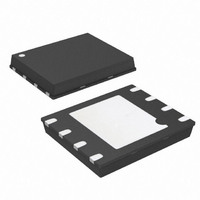AT45DB081D-MU Atmel, AT45DB081D-MU Datasheet - Page 20

AT45DB081D-MU
Manufacturer Part Number
AT45DB081D-MU
Description
IC FLASH 8MBIT 66MHZ 8VDFN
Manufacturer
Atmel
Datasheet
1.AT45DB081D-MU.pdf
(53 pages)
Specifications of AT45DB081D-MU
Format - Memory
FLASH
Memory Type
DataFLASH
Memory Size
8M (4096 pages x 264 bytes)
Speed
66MHz
Interface
SPI, RapidS
Voltage - Supply
2.7 V ~ 3.6 V
Operating Temperature
-40°C ~ 85°C
Package / Case
8-VFQFN, 8-VFQFPN
Architecture
Sectored
Interface Type
SPI
Supply Voltage (max)
3.6 V
Supply Voltage (min)
2.7 V
Maximum Operating Current
15 mA
Mounting Style
SMD/SMT
Organization
64 KB x 16
Density
8Mb
Access Time (max)
6ns
Boot Type
Not Required
Address Bus
1b
Operating Supply Voltage (typ)
3/3.3V
Operating Temp Range
-40C to 85C
Package Type
MLF EP
Program/erase Volt (typ)
2.7 to 3.6V
Sync/async
Synchronous
Operating Temperature Classification
Industrial
Operating Supply Voltage (min)
2.7V
Operating Supply Voltage (max)
3.6V
Supply Current
15mA
Mounting
Surface Mount
Pin Count
8
Lead Free Status / RoHS Status
Lead free / RoHS Compliant
Available stocks
Company
Part Number
Manufacturer
Quantity
Price
Part Number:
AT45DB081D-MU
Manufacturer:
ATMEL/爱特梅尔
Quantity:
20 000
10.2.2
Figure 10-4. Read Security Register
11. Additional Commands
11.1
11.2
20
Main Memory Page to Buffer Transfer
Main Memory Page to Buffer Compare
CS
SO
Atmel AT45DB081D
Reading the Security Register
SI
Each transition
represents 8 bits
Opcode
The Security Register can be read by first asserting the CS pin and then clocking in an opcode
of 77H followed by three dummy bytes. After the last don’t care bit has been clocked in, the con-
tent of the Security Register can be clocked out on the SO pin. After the last byte of the Security
Register has been read, additional pulses on the SCK pin will simply result in undefined data
being output on the SO pins.
Deasserting the CS pin will terminate the Read Security Register operation and put the SO pin
into a high-impedance state.
A page of data can be transferred from the main memory to either buffer 1 or buffer 2. To start
the operation for the Atmel
for buffer 1 and 55H for buffer 2, must be clocked into the device, followed by three address
bytes comprised of three don’t care bits, 12 page address bits (PA11 - PA0), which specify the
page in main memory that is to be transferred, and nine don’t care bits. To perform a main mem-
ory page to buffer transfer for the binary page size (256-bytes), the opcode 53H for buffer 1 or
55H for buffer 2, must be clocked into the device followed by three address bytes consisting of
four don’t care bits, 12 page address bits (A19 - A8) which specify the page in the main memory
that is to be transferred, and eight don’t care bits. The CS pin must be low while toggling the
SCK pin to load the opcode and the address bytes from the input pin (SI). The transfer of the
page of data from the main memory to the buffer will begin when the CS pin transitions from a
low to a high state. During the transfer of a page of data (t
determine whether the transfer has been completed.
A page of data in main memory can be compared to the data in buffer 1 or buffer 2. To initiate
the operation for DataFlash standard page size, a 1-byte opcode, 60H for buffer 1 and 61H for
buffer 2, must be clocked into the device, followed by three address bytes consisting of three
don’t care bits, 12 page address bits (PA11 - PA0) that specify the page in the main memory that
is to be compared to the buffer, and nine don’t care bits. To start a main memory page to buffer
compare for a binary page size, the opcode 60H for buffer 1 or 61H for buffer 2, must be clocked
into the device followed by three address bytes consisting of four don’t care bits, 12 page
address bits (A19 - A8) that specify the page in the main memory that is to be compared to the
buffer, and eight don’t care bits. The CS pin must be low while toggling the SCK pin to load the
opcode and the address bytes from the input pin (SI). On the low-to-high transition of the CS pin,
the data bytes in the selected main memory page will be compared with the data bytes in buffer
1 or buffer 2. During this time (t
X
X
®
DataFlash
COMP
X
), the status register will indicate that the part is busy. On
®
standard page size (264-bytes), a 1-byte opcode, 53H
Data Byte
n
Data Byte
n + 1
XFR
), the status register can be read to
Data Byte
n + x
3596M–DFLASH–5/10













